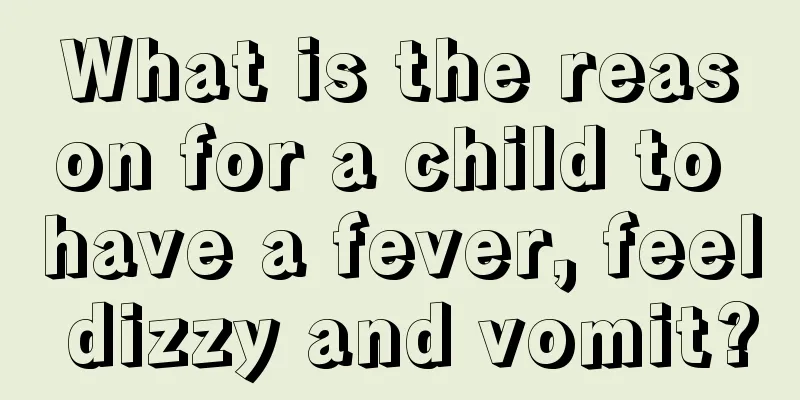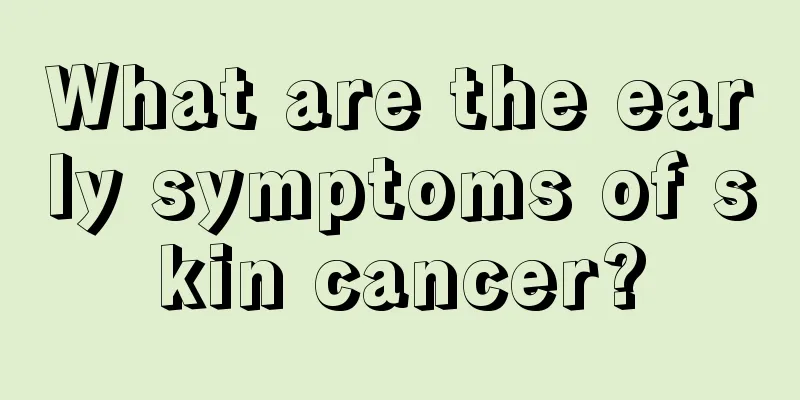What is the reason for a child to have a fever, feel dizzy and vomit?

|
Children are very prone to diseases due to their low body resistance, weak constitution, and lack of knowledge of protecting themselves from viral infections. Fever, dizziness and vomiting are very common in children, which can cause children to have fever, anorexia, insomnia, etc., which can affect their physical development. Faced with this situation, parents need to actively understand treatment. Here we will introduce the reasons why children have fever, dizziness and vomiting. The most common cause of fever in children is infection. If the fever lasts for more than 48 hours, or other symptoms such as coughing, vomiting, and lack of energy occur, you need to go to the hospital for a blood test to see if it is a bacterial, viral, or mycoplasma infection. Symptomatic medication should be used based on the blood test results, and the doctor should also listen to the lungs or take a chest X-ray to see if there is pneumonia. If the fever lasts for a long time, you should also pay attention to whether there is Epstein-Barr virus infection. Guidance: If the body temperature exceeds 38.5 degrees, take Motrin orally to reduce fever. Motrin should not be taken more than four times a day. If the high fever persists after taking Motrin, antipyretic injections are needed. Fever below 38.5 degrees is considered low fever. Physical cooling should be used. Drink plenty of water. Use a warm towel to wipe the child's neck, armpits, groin, thighs, etc. Pay attention to a light diet and avoid greasy, irritating, and spicy foods. Fever, dizziness and vomiting cannot rule out encephalitis, and a lumbar puncture is required to confirm the diagnosis. Bacteria or viruses, the two types of infections require completely different medications Generally speaking, bacteria and viruses are the most common sources of infection for babies. The treatment methods for fever caused by these two situations are completely different. If it is a bacterial infection, the treatment effect will be very good as long as the right antibiotics are chosen. If it is a viral infection, there is currently no specific medicine for most viruses. The World Health Organization recommends that no antipyretic drugs should be used for infants under 2 months old. In general, antipyretic medications should be used only for children with high fevers. The method and dosage of taking must be done according to the doctor's instructions. We recommend giving your child antipyretics only when the body temperature exceeds 38.5 degrees Celsius. If your child has a history of high fever convulsions, you may give him or her antipyretics when the temperature reaches 38 degrees Celsius. What should be noted in particular is that many parents often mix different types of antipyretic drugs for their children. Some impatient parents, when the fever does not go down after half an hour of oral medication, add suppositories. This antipyretic strength is too strong and is not appropriate. Parents can choose an antipyretic drug that contains ibuprofen or acetaminophen, and become familiar with its dosage and interval so that they can use it with ease. 3 Stages of Fever in Perspective Generally, infants and young children will have a fever in the following order, but not every situation will occur. Sometimes the baby will not go through the chill stage and will directly have a fever. However, babies who have chills when they have a fever will mostly have a fever of around 39 degrees and will feel very uncomfortable. Of course, sometimes a fever may not cause sweating. Therefore, parents can use the three-stage process as a reference, but it cannot summarize the fever process of every baby! 1. Chills Causes & Symptoms When a baby is infected, the body's temperature regulation center will adjust itself up to protect itself. However, before the body temperature rises, the body will have a heat-producing mechanism that actively transfers the heat to the center of the body. At this time, the circulation in the limbs will deteriorate, resulting in cold hands and feet. Chills are the early stages of a fever. When measuring body temperature, it may be less than 38 degrees, but the baby will shiver all over and even have chills. |
<<: What should I do if my child hits his head and gets a blister?
>>: What to do if you have a low-grade fever, headache, dizziness, and weakness in your limbs
Recommend
Pain above the left buttock and below the waist
I have pain above my left buttock and below my wa...
How to grow hair faster?
The growth of hair is actually related to the hea...
What is the cause of ovarian teratoma
Ovarian teratoma is a common ovarian germ cell tu...
Can nasopharyngeal carcinoma be misdiagnosed as sudden deafness?
Can nasopharyngeal carcinoma be misdiagnosed as s...
How to use the warm baby, this is the correct way to open it
A warm pack is a product used for keeping warm. W...
What should I do if my vocal cords are injured
The human throat is not only very fragile, but al...
3 recovery methods for advanced prostate cancer
Many prostate cancer patients lose confidence in ...
Nursing care for three common types of pancreatic cancer patients
Nursing of pancreatic cancer patients is a topic ...
Briefly describe the Western medicine treatment methods for pancreatic cancer
Western medicine treatment of pancreatic cancer c...
The nutritional value and efficacy of pigeon eggs
The size of pigeon eggs is much smaller than the ...
Clinical symptoms of uterine fibroids
Symptoms of uterine fibroids are common clinical ...
How to quickly eliminate blisters on lips, 4 methods to see amazing results
It is normal to have lips getting inflamed and bl...
Will the milk lumps disappear automatically?
After mothers wean their babies, their breasts st...
The first place where lung cancer metastasizes
Lung cancer is a common malignant tumor, and its ...
Differentiation between nasopharyngeal carcinoma and rhinitis
In the early stage of nasopharyngeal cancer, ther...









